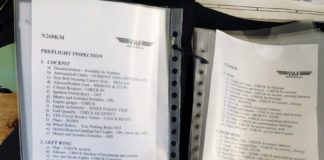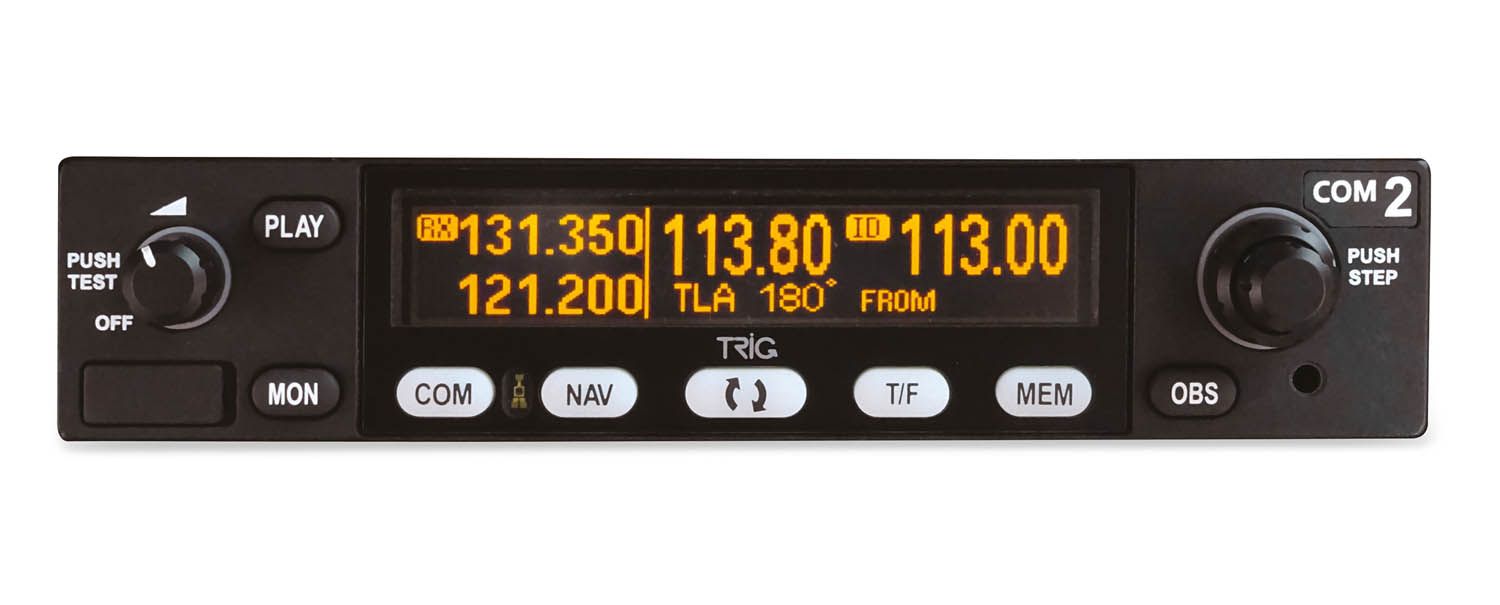 Shadowed by GPS, the VHF nav/com could be making a return. Scotland-based Trig Avionics sees a demand for its new TX-series radio, which it introduced at AirVenture last summer. Sporting a generous feature set and an open architecture, the TX56 is positioned to compete directly with Garmin’s GNC 255 nav/com.
Shadowed by GPS, the VHF nav/com could be making a return. Scotland-based Trig Avionics sees a demand for its new TX-series radio, which it introduced at AirVenture last summer. Sporting a generous feature set and an open architecture, the TX56 is positioned to compete directly with Garmin’s GNC 255 nav/com.
Let’s take look at the new Trig radio, with some tactical advice on why you might choose one.
Trig TX56: Not Grandpa’s Nav/Com
The TX56/57 share the same chassis as the com-only TY96/97, but add a digital VHF receiver for VOR, localizer and ILS nav. The TX56 is 10 watts, while the TX57 is a 28-volt version with a 16-watt transmitter.
The TX56 isn’t exactly a budget buy at $4175, but it is generous on features and saves space thanks to a slim footprint, standing 1.3 inches tall and 9.1 inches deep. Check that against the 2.05-inch-tall venerable King KX 155, a radio that Trig hopes the TX56 will replace in big numbers, as there are still plenty of these rigs in service.

For jump in, fly now, the radio’s basic functions are straightforward enough to work without a manual, with stone-simple frequency tuning and volume adjustment. But there’s a lot more to the user interface—more than any standalone radio. (It has 8.33 kHz and 25 kHz frequency channeling.) We think Trig did a good job designing the hardware and the bezel controls have a durable and positive feel. There is no touchscreen. The left bezel knob serves double duty as an on/off switch and volume control for the com and nav receivers. The radio can be wired for a basic two-seat intercom, plus it has aux input for external alerts and an input (with volume adjustment and muting) for piping in a music source.
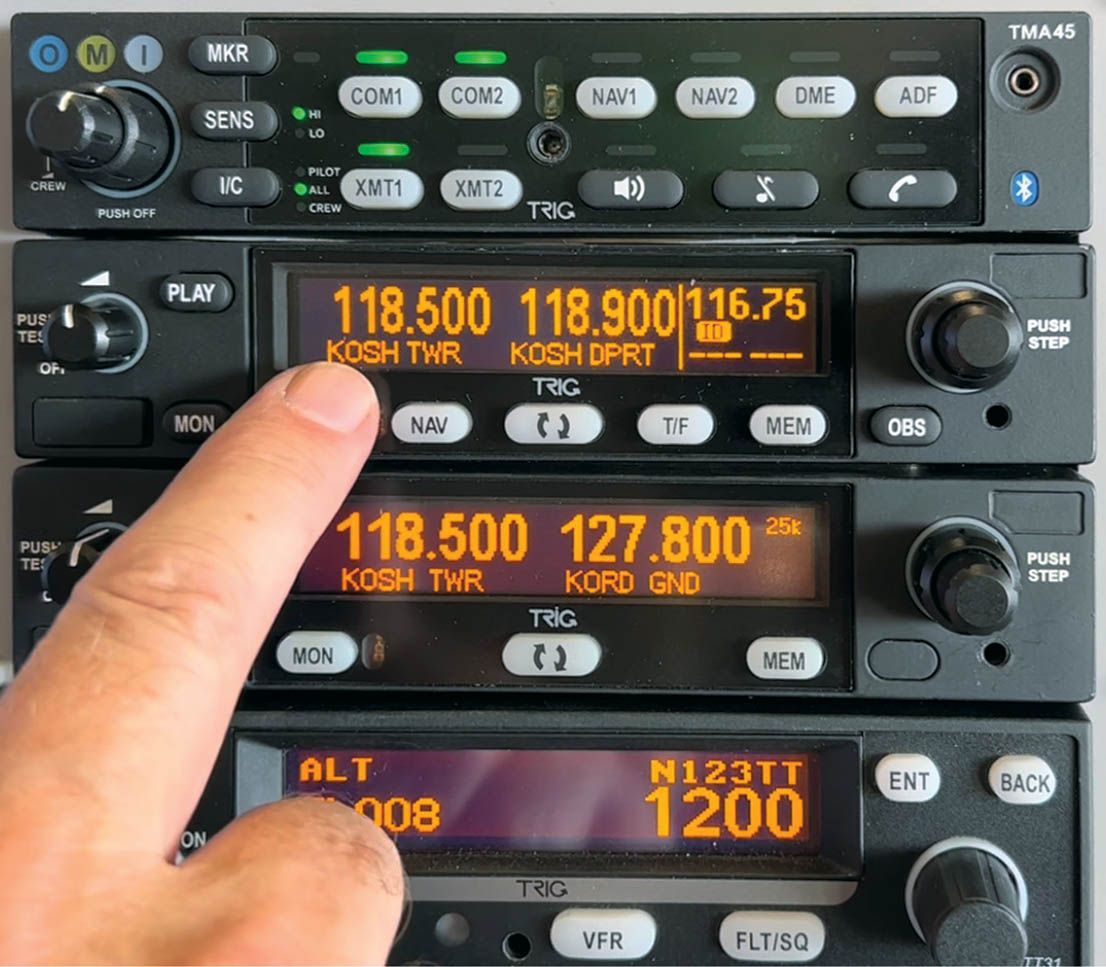
You’ll immediately notice the USB port on the front bezel, but unfortunately it can’t be used for charging your smartphone. Instead, it’s used for loading data into the radio, including three types of databases with frequencies and station identifiers for com and nav frequencies. One data bank is stored in the radio and configured by the pilot. Another is a list of the 10 most recently used frequencies and will be populated automatically at start-up. The third data patch is only available if the radio has been connected to a compatible GPS receiver (Garmin and Avidyne will work), and it contains frequencies loaded from the GPS database, based on position. To that end, we think a version of this radio with a VFR GPS would offer sizable utility when replacing vintage nav/coms.
The com and nav radios include a dual-frequency listen feature, and pressing the Mon button toggles this feature on and off. The monitor mode can even be enabled separately for the com and nav radios by simply pressing the Mon button while on the appropriate screen. This monitor function provides good utility when you only have a single radio because it’s almost like having dual receivers. There’s even a scan mode. The Play button on the upper left of the bezel is for the built-in audio recorder. Pressing it will automatically replay the previous transmission received from ATC. During playback the PB icon will be displayed on the screen. If a new transmission is received during playback, the playback is canceled and the live transmission will be heard instead.
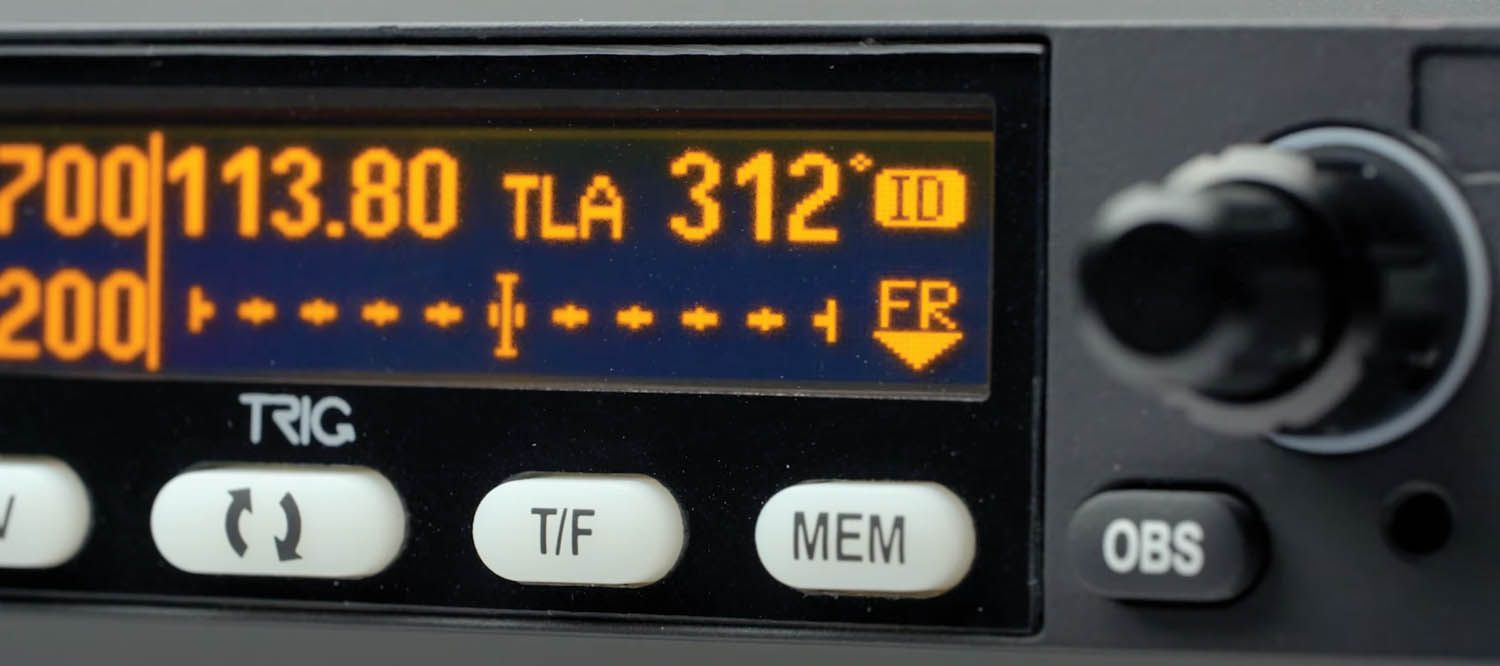
Trig makes good use of the limited display area. In navigation radio mode, the dividing bar moves to the left and the navigation radio window occupies most of the LCD backlit screen. VOR and ILS navigation isn’t an afterthought; in nav mode the primary knobs and buttons specifically control the function of the navigation radio. If you don’t have a CDI connected, the built-in OBS display serves as an integrated CDI for lateral course guidance. The left/right movement of the on-screen needle indicates the course position relative to the aircraft position. When the needle is in the middle, the aircraft is on the selected course. A To/From flag will be shown to indicate whether the course is inbound or outbound. The right knobs (tuning knobs) act as OBS knobs and allow you to select the desired VOR radial. In com radio mode the dividing bar moves to the right and the com radio window occupies most of the screen.
As a shortcut, if the tuned VOR is in range, pressing on the end of the tuning knob will slew the OBS value to match the current radial. With the Dual Watch nav feature, the radio displays the radial to/from the VOR station in the secondary frequency window by periodically sampling the secondary VOR signal. This is intended to identify a crossing radial.
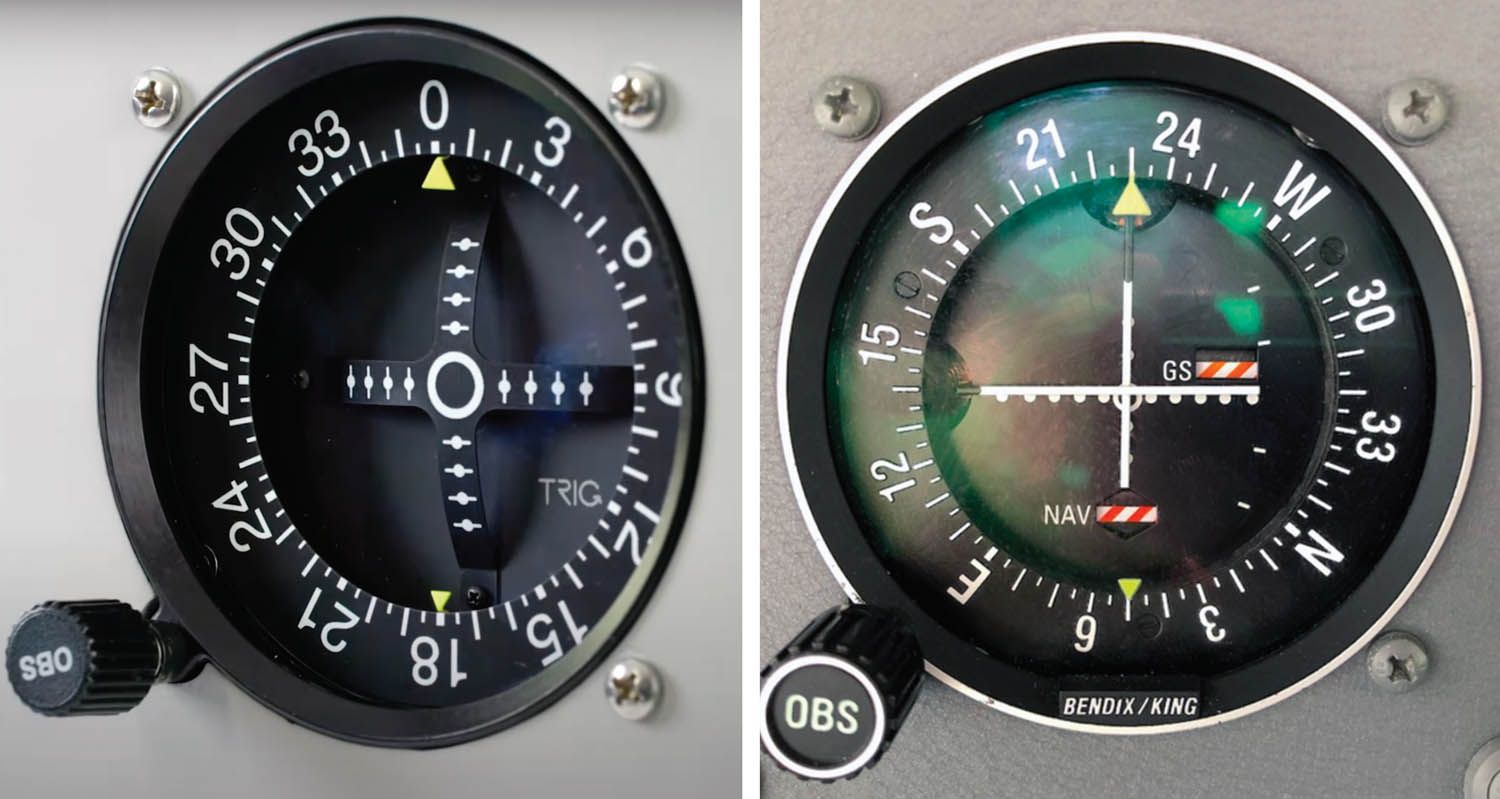
Open Architecture, Easy To Install
Trig understands the importance of cross-brand compatibility because of the wide variety of nav indicators that are in existing panels—everything from modern EFIS displays to analog CDIs. That’s a dollar-saver for existing panel upgrades and enticing for new kits. With composite analog nav, an OBS resolver and RS-232 serial outputs, the Trig is likely compatible with a legacy nav indicator that may already be in place—maybe a King KI 209 as a common example.
At the Trig kiosk at AirVenture, the demo was saddled up to an Aspen EFD1000 Pro Max PFD and the second radio was connected to Trig’s own TI106 mechanical CDI. Trig said it designed the radios to also work with Garmin G3X Touch integrated flight displays (and the GI 275 EHSI) and Dynon SkyView displays. Since the radio has an RS-232 output, it can display left/right course data on the uAvionix AV-30 flight instrument. Got a King KN 63 DME? The Trig radio will channel it. Thumbs up to Trig for good compatibility.
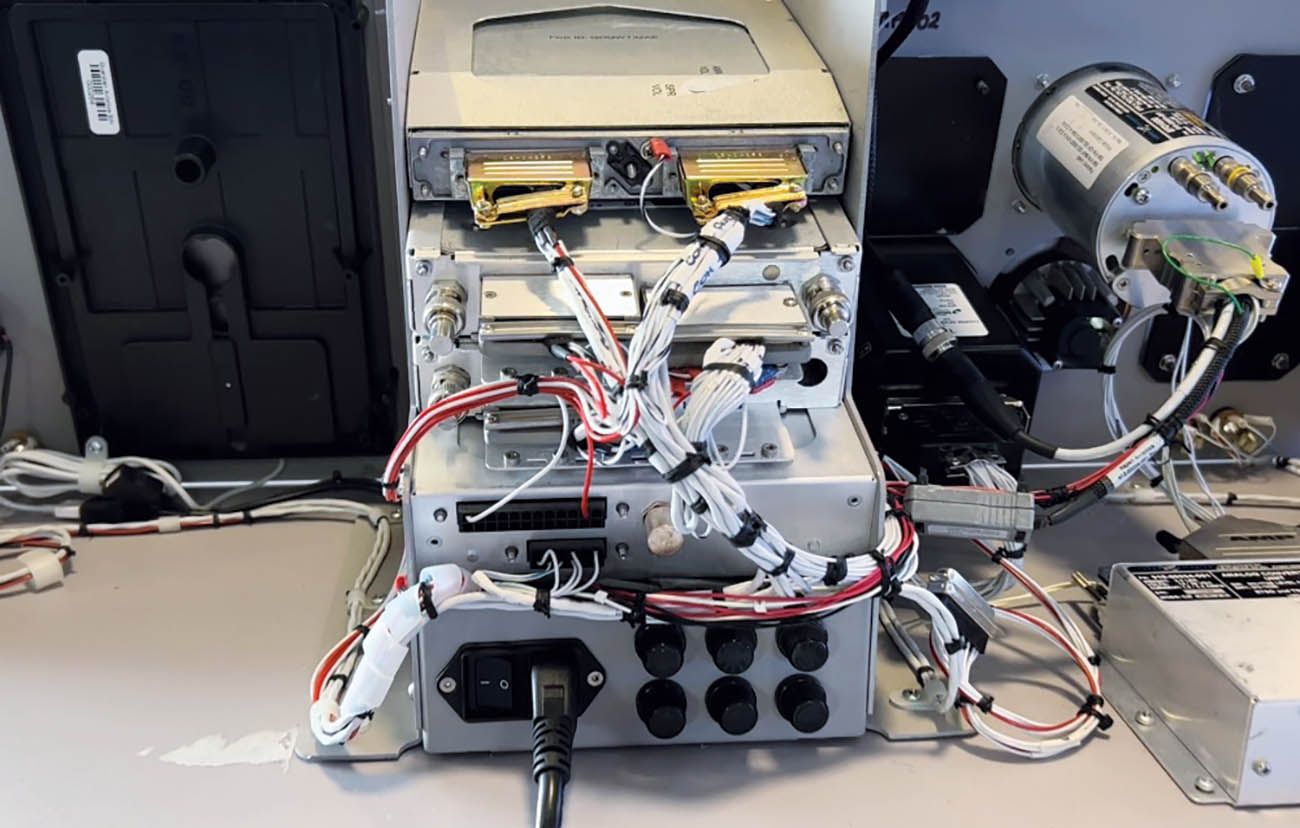
If you want out with the old CDI, Trig’s TI106 3-inch solid-state mechanical CDI can be used for primary course guidance. Priced at $2600 and made by Mid-Continent Instruments and Avionics, the LED backlit TI106 has a striking resemblance to the Garmin GI 106A. It has OBS course resolver output, which provides the compass card position as a phase reference electrical signal. It also has built-in annunciation for displaying To/From/BC/Nav/GPS mode status. With the appropriate switching relay, the indicator can be used with the Trig radio and a GPS. In fact, the radio’s lateral and vertical nav outputs can simultaneously drive up to five indicators.
When it comes to installation, Trig’s mechanical and electrical interface is straightforward and what you would expect with a modern nav/com. There’s a 25-pin D-type connector for the communications radio and audio system, and a 44-pin D-type connector for the navigation receiver. There are two RF antenna connectors—one for the communications radio and one for the navigation receiver. If the VHF nav portion of the radio will share a nav antenna with another radio (maybe a Garmin GNS 430 or another nav/com), you’ll need a nav antenna coupler. This is also a good time to run new coaxial antenna cable for the com and nav, if your installation still has the older non-shielded cable. Assess the condition of the existing antennas and replace them, too, if there’s any doubt about their performance. Old nav antenna systems can be a big source of signal loss.
The recommended signal combiner/splitter is the frequency-independent Minicircuits ZFSC-2-1-B+ (Trig Avionics part number 02309-00). Because it is frequency independent, it can combine and split both VOR/LOC and glideslope signals on the same coax antenna cable. Remember, every time you pass through a splitter/combiner, the signal strength is reduced.
To help with troubleshooting receiver failures, a catastrophic internal failure triggers a fault warning, with a brief statement of the problem. The fault may be cleared by recycling the power to the radio. Try that with your KX 155.
Conclusion
In a market with very few options for new traditional VHF nav/coms, we think Trig cleanly struck a series of high notes with the TX56/57. We’re particularly pleased that it has an open architecture for working with a variety of flight displays and nav indicators, uses rugged high-quality installation hardware and has plenty of useful features as standard. Moreover, Trig has a decent U.S. support network in place, has proven good quality and the radio has an industry-standard two-year warranty.
But if you’re convinced that you’ll never have a need to use ground-based VHF navigation, we think Garmin’s GNC 355 touchscreen GPS/com could be the better investment. On the other hand, at $7595 (not including an indicator) it’s priced considerably higher than the $4175 TX56. For basic VFR flying, with the added capability for flying a ground-based ILS—even for instrument training—we think the TX56 is a solid value.













